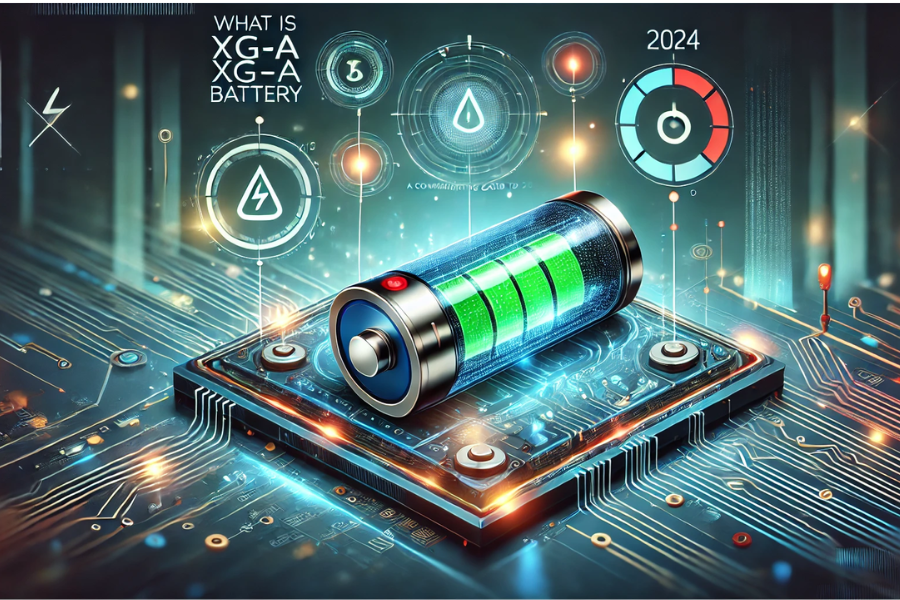The XG-A Battery: A New Era of Energy Storage And More Explore
In today’s fast-paced world, the push for efficient and eco-friendly energy storage solutions has never been more urgent. The XG-A battery, a cutting-edge development in this field, is poised to reshape how we store and use energy. From electric vehicles (EVs) to smart grids, this breakthrough technology is redefining performance standards. This article dives into the workings, benefits, applications, and future potential of XG-A batteries, providing valuable insights for tech enthusiasts and EV owners alike.
What is the XG-A Battery?
An Overview
The XG-A battery is a leap forward in battery technology, designed to outshine traditional options with unmatched efficiency and longevity. While traditional batteries have seen modest improvements over the years, the XG-A battery addresses the needs of modern tech, offering robust energy storage and quick charging capabilities in a more sustainable format.
Its Importance in Today’s World
As our lives become more connected and mobile, a reliable, long-lasting, and eco-friendly power source is essential. From powering EVs to renewable energy storage, the XG-A battery is setting a new standard in energy storage that meets the needs of our environmentally-conscious future.
Technical Specifications
Key Features
The XG-A battery’s design includes several standout features that make it highly effective across various applications.
- High Energy Density: XG-A batteries can hold significantly more energy in a compact space, essential for applications where size and weight matter, such as EVs and portable electronics.
- Extended Life Cycle: Unlike many batteries that degrade over time, the XG-A battery offers longer usage with less performance loss, reducing the frequency of replacements.
- Fast Charging: Thanks to innovative materials, the XG-A battery charges faster than traditional options, a crucial feature in a fast-moving world.
- Enhanced Safety: Equipped with safety features to prevent overheating and short-circuiting, the XG-A battery addresses common concerns associated with energy storage.
Eco-Friendly Design
Sustainability is integral to XG-A batteries, which use fewer hazardous materials and incorporate environmentally-friendly components. This design results in a reduced environmental footprint, making the XG-A battery an appealing alternative to traditional batteries.
How XG-A Batteries Work
Basic Mechanism
At a fundamental level, XG-A batteries work similarly to traditional batteries, consisting of an anode, cathode, and electrolyte, all involved in storing and releasing energy through chemical reactions.
- Components: The anode (negative electrode), cathode (positive electrode), and electrolyte enable ion movement. XG-A batteries use advanced materials for these parts, which contribute to their efficiency.
- Chemical Reactions: As the battery charges, ions flow from the cathode to the anode and return during discharge, releasing energy. These reactions are optimized in XG-A batteries to maximize performance and sustainability.
Innovative Materials and Advantages
The unique materials used in XG-A batteries enhance performance, safety, and environmental impact, delivering a high energy density and fast charge time in a compact form.
Applications of XG-A Batteries
Electric Vehicles (EVs)
One of the most promising uses for XG-A batteries is in EVs, where efficiency, energy storage, and longevity are essential.
- Benefits for EVs: High energy density means longer driving ranges, while fast charging cuts down time spent at charging stations. The extended life cycle also makes EV ownership more economical.
- Industry Examples: Companies like Tesla and Nissan are already testing XG-A batteries in prototype models, showcasing their potential to increase EV range and charging efficiency.
Renewable Energy Storage
XG-A batteries are also transforming renewable energy storage by stabilizing energy availability from sources like solar and wind power.
- Integration with Renewable Sources: XG-A batteries can store excess energy produced by solar and wind systems for use when production is low, providing a more reliable renewable energy supply.
- Impact on Storage Solutions: The ability to store large amounts of energy efficiently makes XG-A batteries ideal for balancing energy grids and reducing reliance on fossil fuels.
Portable Electronics
The benefits of XG-A batteries also extend to personal devices, improving the performance of smartphones, laptops, and more.
- Usage in Electronics: The high energy density and fast-charging abilities of XG-A batteries enable longer-lasting and quicker-charging devices, providing better user experiences.
Smart Grids
As power distribution systems evolve, XG-A batteries will play a key role in stabilizing smart grids by balancing supply and demand.
- Enhancing Grid Reliability: By storing surplus energy during off-peak hours and releasing it during peak demand, XG-A batteries help create a more stable and responsive energy distribution network.
Advantages of XG-A Batteries Over Traditional Options
Lithium-Ion Comparison
When compared to lithium-ion batteries, XG-A batteries offer a higher energy density, quicker charging, and a longer life cycle. Their safer, recyclable materials provide added benefits, reducing their environmental impact.
Performance and Longevity
XG-A batteries are designed to last longer with minimal degradation, enhancing their overall efficiency and reducing the frequency of replacements, making them a cost-effective energy storage solution.
Environmental Impact
With reduced toxic materials and longer lifespans, XG-A batteries offer clear environmental advantages. Their sustainable design also allows for easier recycling, further lowering their environmental impact.
Challenges and Future Prospects
Current Limitations
Despite their advantages, XG-A batteries face some hurdles, particularly around cost and technical refinement.
- Technical and Economic Challenges: The advanced materials and manufacturing processes involved in making XG-A batteries are still costly, making them less accessible to mainstream markets. Streamlining these processes will be key to reducing costs.
- Research and Development: Continued R&D is essential to optimize performance and affordability. Advances in materials and processes are expected to make XG-A batteries more accessible and efficient.
Future Innovations
The potential of XG-A batteries is vast. With improvements in materials science and battery technology, XG-A batteries could become a staple in energy storage solutions. Innovations like solid-state technology and streamlined manufacturing will likely make them more affordable and efficient, further cementing their place in the market.
Conclusion
The XG-A battery is a breakthrough in energy storage, combining high energy density, fast charging, extended lifespan, and eco-friendly construction. With applications ranging from EVs to renewable energy systems, XG-A batteries are set to make a lasting impact on technology and sustainability.
For anyone interested in the future of energy, understanding the role of XG-A batteries is crucial—they’re not just powering devices but paving the way for a cleaner, more efficient energy future. Stay tuned for future developments as researchers continue to refine and expand the possibilities of this transformative technology.
Frequently Asked Questions (FAQs)
1. What are XG-A batteries?
XG-A batteries are advanced energy storage solutions with superior energy density, faster charging, and extended life compared to traditional lithium-ion batteries, making them highly efficient and environmentally friendly.
2. How do XG-A batteries differ from lithium-ion?
XG-A batteries surpass lithium-ion batteries in energy density, charge time, and longevity. They are also designed with fewer harmful materials, simplifying recycling and reducing environmental impact.
3. Where are XG-A batteries used?
XG-A batteries serve a range of applications, from electric vehicles and portable electronics to renewable energy storage and smart grids, thanks to their high efficiency and sustainability benefits.
4. Are XG-A batteries eco-friendly?
Yes, XG-A batteries use fewer harmful chemicals, are easier to recycle, and have a longer life cycle, making them an environmentally conscious choice.
5. What challenges do XG-A batteries face?
Challenges for XG-A batteries include high production costs and ongoing technical refinement. However, research is underway to make them more accessible and cost-effective.







